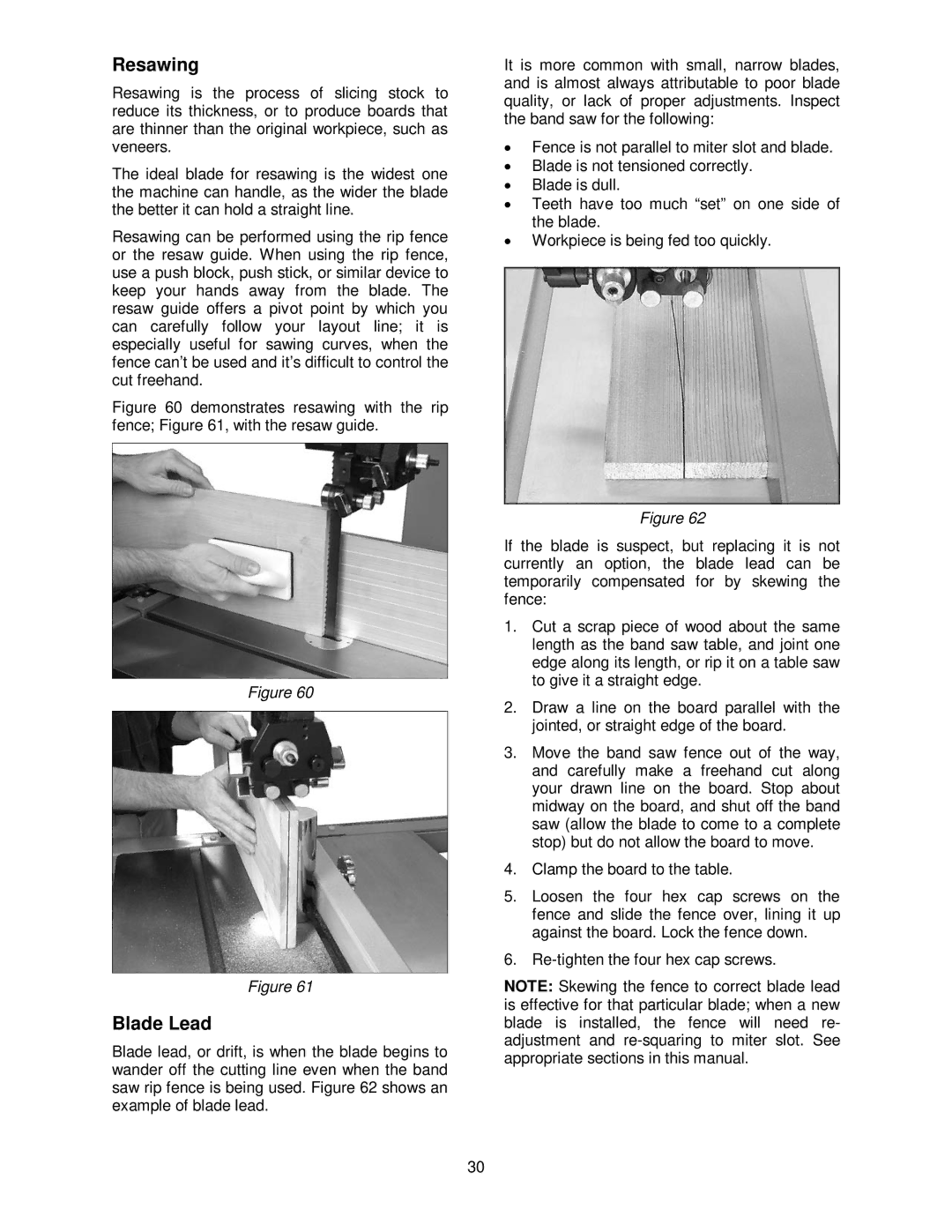
Resawing
Resawing is the process of slicing stock to reduce its thickness, or to produce boards that are thinner than the original workpiece, such as veneers.
The ideal blade for resawing is the widest one the machine can handle, as the wider the blade the better it can hold a straight line.
Resawing can be performed using the rip fence or the resaw guide. When using the rip fence, use a push block, push stick, or similar device to keep your hands away from the blade. The resaw guide offers a pivot point by which you can carefully follow your layout line; it is especially useful for sawing curves, when the fence can’t be used and it’s difficult to control the cut freehand.
Figure 60 demonstrates resawing with the rip fence; Figure 61, with the resaw guide.
Figure 60
Figure 61
Blade Lead
Blade lead, or drift, is when the blade begins to wander off the cutting line even when the band saw rip fence is being used. Figure 62 shows an example of blade lead.
It is more common with small, narrow blades, and is almost always attributable to poor blade quality, or lack of proper adjustments. Inspect the band saw for the following:
•Fence is not parallel to miter slot and blade.
•Blade is not tensioned correctly.
•Blade is dull.
•Teeth have too much “set” on one side of the blade.
•Workpiece is being fed too quickly.
Figure 62
If the blade is suspect, but replacing it is not currently an option, the blade lead can be temporarily compensated for by skewing the fence:
1.Cut a scrap piece of wood about the same length as the band saw table, and joint one edge along its length, or rip it on a table saw to give it a straight edge.
2.Draw a line on the board parallel with the jointed, or straight edge of the board.
3.Move the band saw fence out of the way, and carefully make a freehand cut along your drawn line on the board. Stop about midway on the board, and shut off the band saw (allow the blade to come to a complete stop) but do not allow the board to move.
4.Clamp the board to the table.
5.Loosen the four hex cap screws on the fence and slide the fence over, lining it up against the board. Lock the fence down.
6.
NOTE: Skewing the fence to correct blade lead is effective for that particular blade; when a new blade is installed, the fence will need re- adjustment and
30
